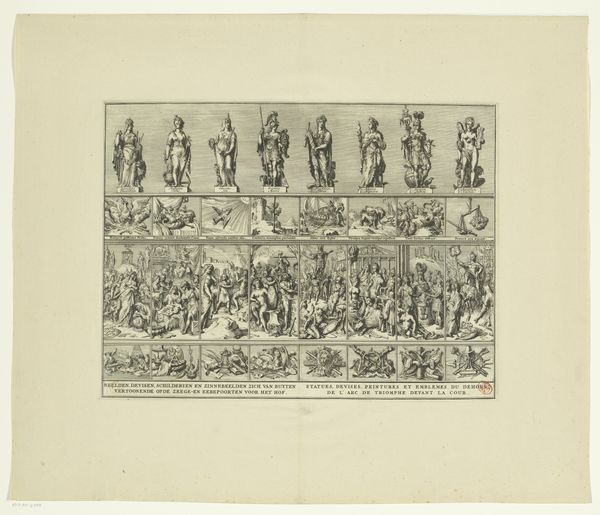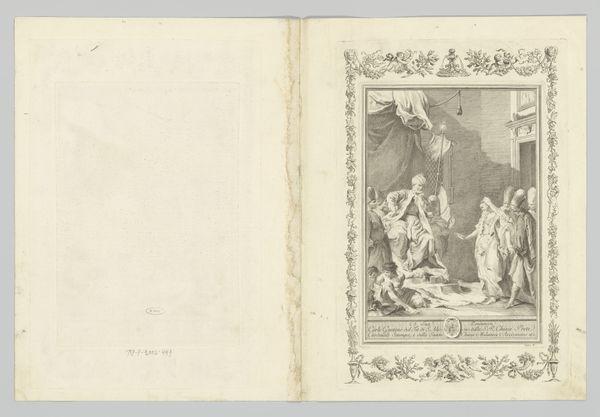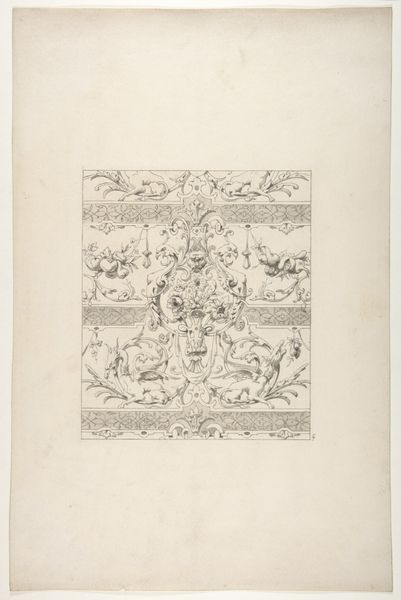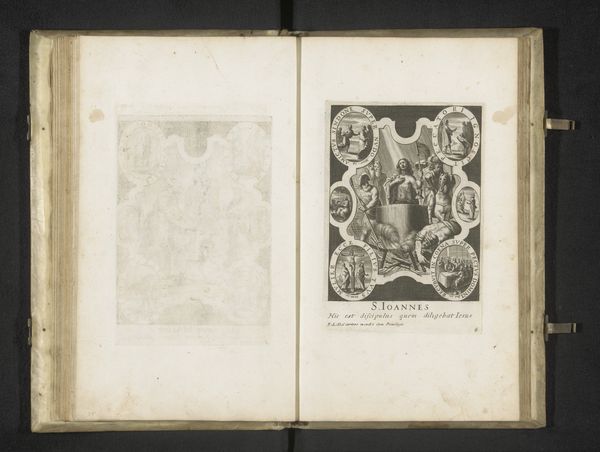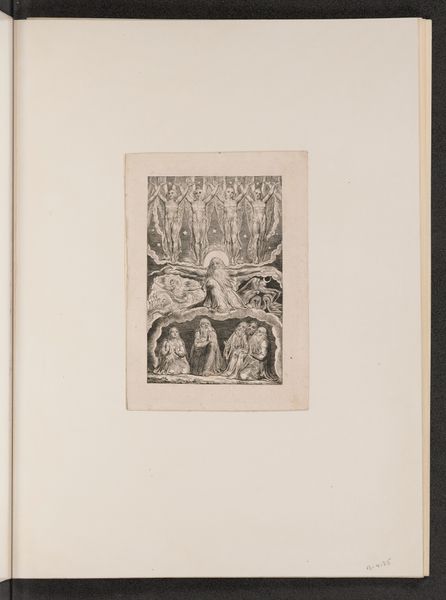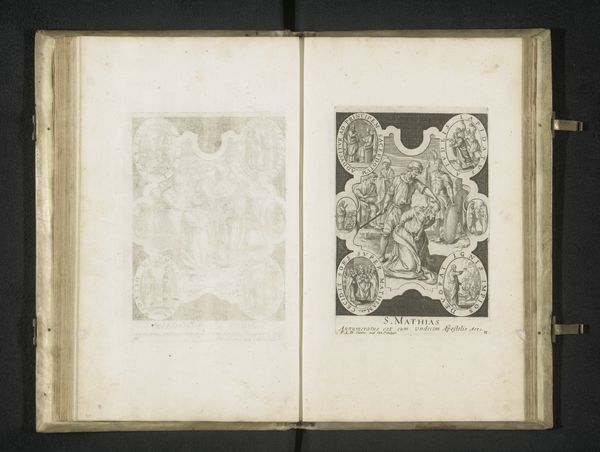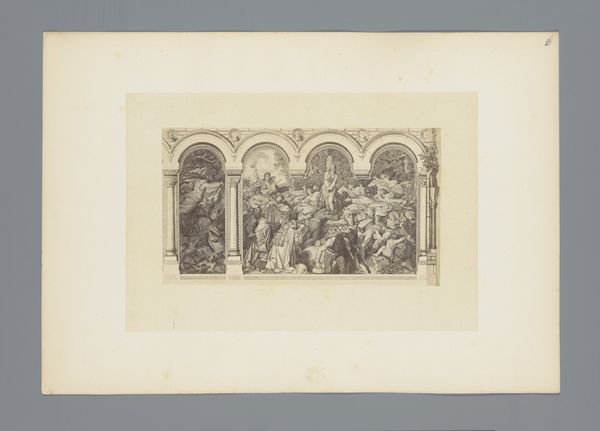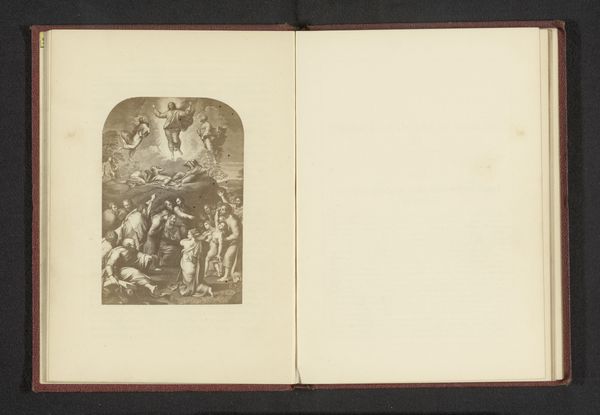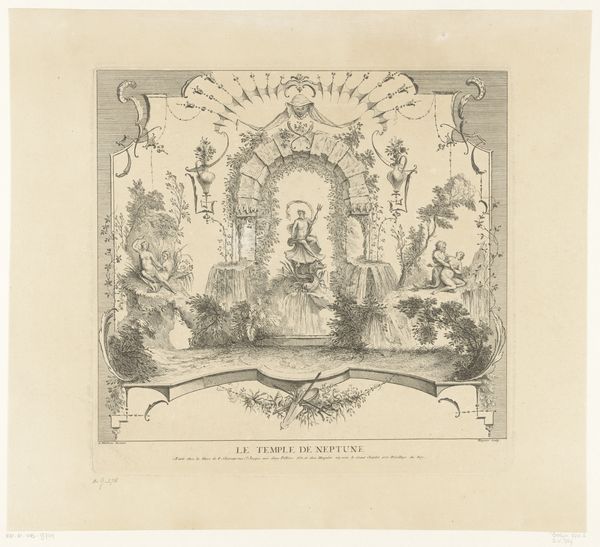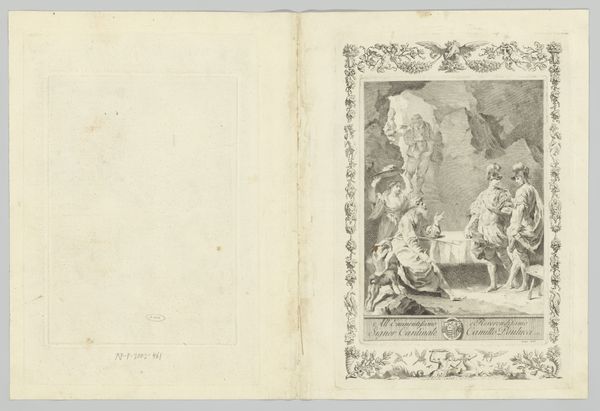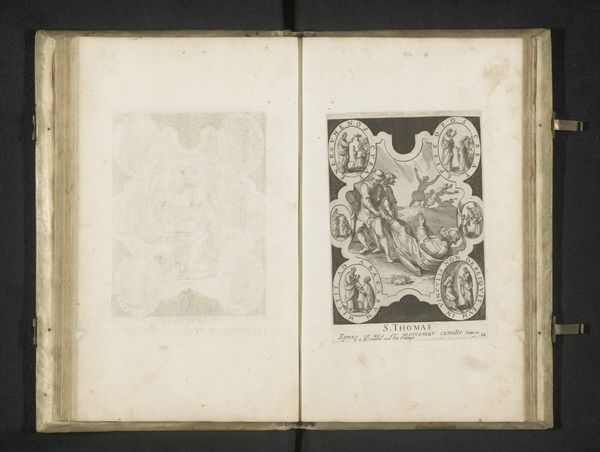
print, engraving
#
baroque
# print
#
pen illustration
#
pen sketch
#
old engraving style
#
personal sketchbook
#
ink drawing experimentation
#
pen-ink sketch
#
line
#
pen work
#
sketchbook drawing
#
cityscape
#
history-painting
#
storyboard and sketchbook work
#
sketchbook art
#
engraving
Dimensions: height 333 mm, width 445 mm
Copyright: Rijks Museum: Open Domain
In 1691, Romeyn de Hooghe created this print, "Schilderijen op de triomfbogen voor het Buitenhof," which translates to "Paintings on the triumphal arches for the Buitenhof". This work provides insight into the performative aspects of power and identity in the Dutch Golden Age. The print depicts a series of painted scenes displayed on triumphal arches, likely erected for a state event or celebration. Consider the role of triumphal arches. They were often temporary structures designed to honor rulers or commemorate military victories, filled with symbolism and allegorical representations intended to reinforce authority and project an image of strength and legitimacy. De Hooghe’s detailed rendering invites us to consider how such displays shaped public perception and reinforced social hierarchies. What stories are told through these images? What identities are being celebrated, and whose stories are being left out? The very act of creating and displaying these arches was a political statement, reflecting and shaping the values of Dutch society.
Comments
No comments
Be the first to comment and join the conversation on the ultimate creative platform.
